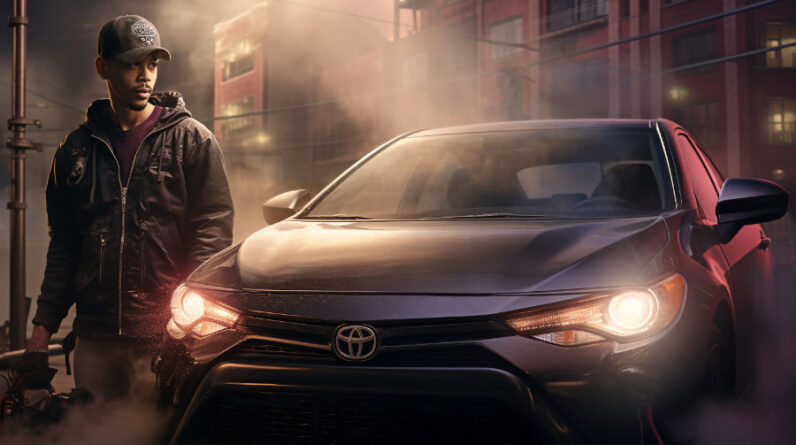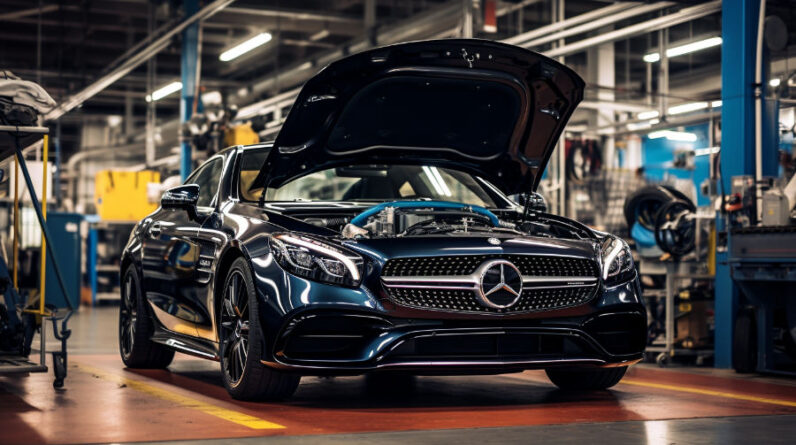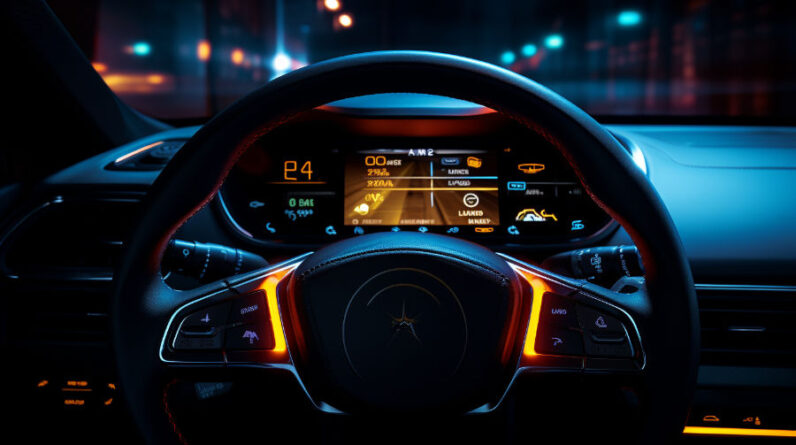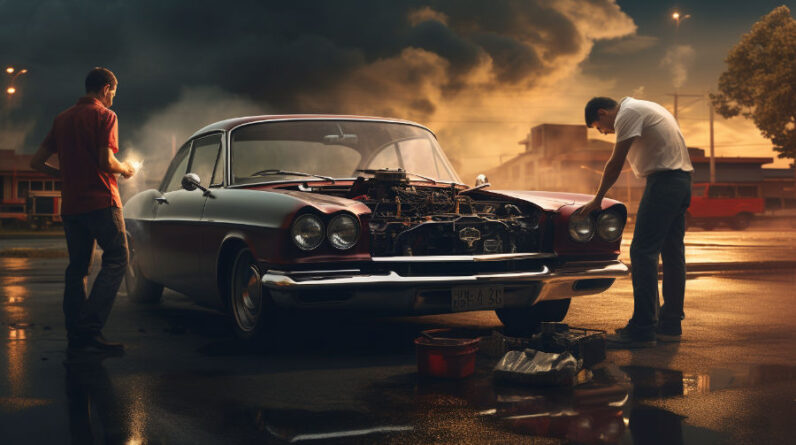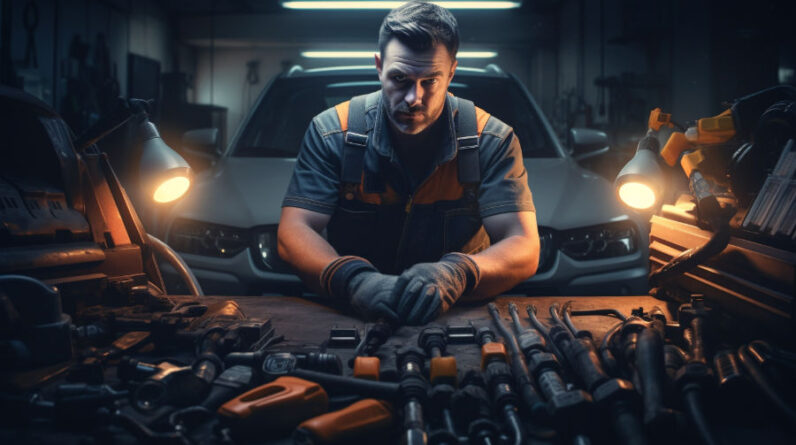Do you find yourself stuck in a time warp, cruising around in an old clunker that seems to have more problems than a Rubik’s Cube? Well, fear not, because we’re here to help you navigate the treacherous waters of common old car problems.
From faulty batteries to leaky radiators, engine overheating to brake problems, and even electrical issues, we’ve got you covered.
Picture this: you’re cruising down the road, wind in your hair, when suddenly your car just won’t start. Sound familiar? Well, that’s probably because your battery has decided to call it quits. But don’t worry, we’ll show you how to identify the signs of a faulty battery and how to replace it without breaking the bank.
And let’s not forget about the radiator that’s leaking like a sieve. We’ll teach you how to spot the telltale signs of a leaky radiator and how to fix it so you can keep your cool on those hot summer days.
So buckle up, because we’re about to take you on a journey through the most common old car problems and show you how to fix them like a pro.
Key Takeaways
- Faulty batteries, leaky radiators, engine overheating, and brake problems are common issues in old cars.
- Signs of a faulty battery include dim headlights, slow engine crank, and a clicking sound when turning the key.
- Regular battery maintenance includes checking terminals for corrosion, cleaning if necessary, and testing voltage regularly.
- Signs of a leaky radiator include a trail of shimmering fluid under the car, and radiator maintenance involves checking for coolant leakage, ensuring a tightly sealed radiator cap, keeping the radiator clean, and flushing and replacing coolant as recommended by the manufacturer.
Faulty Battery
Is your car giving you trouble starting up? It could be because of a faulty battery! Proper battery maintenance is crucial to ensure your car starts smoothly. Signs of a dying battery include dim headlights, a slow engine crank, and a clicking sound when you turn the key.
Regularly check the battery terminals for corrosion and clean them if necessary. Additionally, make sure to test your battery’s voltage regularly to avoid unexpected breakdowns.
Leaky Radiator
Check if your vehicle’s radiator is leaking by looking for a trail of shimmering fluid under your car. To maintain your radiator and prevent leaks, follow these tips:
- Regularly check for any signs of coolant leakage.
- Ensure the radiator cap is tightly sealed.
- Keep the radiator clean and free from debris.
- Flush and replace the coolant according to the manufacturer’s recommendations.
If you notice a leak, promptly repair it to avoid engine overheating and potential damage.
Engine Overheating
When your engine starts sputtering and smoke billows from under the hood, it’s a fiery warning sign of an overheating problem. Engine overheating is a common issue in old cars and can lead to serious damage if not addressed promptly. To troubleshoot engine overheating, it is important to perform cooling system maintenance regularly. This includes checking coolant levels, inspecting hoses and belts for leaks or cracks, and ensuring proper functioning of the radiator fan. By taking these preventive measures, you can prevent your engine from overheating and prolong the life of your car.
| Cooling System Maintenance | Troubleshooting Engine Overheating |
|---|---|
| Check coolant levels | Inspect hoses and belts |
| Look for leaks or cracks | Ensure proper radiator fan function |
| Perform regular maintenance | Monitor temperature gauge |
Brake Problems
If you’re experiencing brake problems, it’s important to be able to identify the signs of worn brake pads or rotors. Look out for indicators such as squeaking or grinding noises when you apply the brakes, reduced braking performance, or a vibrating sensation in the brake pedal.
To replace brake components, start by jacking up the car and removing the wheels. Then, remove the brake caliper, pads, and rotors, and replace them with new ones. Make sure to properly torque all bolts and test the brakes before hitting the road again.
Signs of Worn Brake Pads or Rotors
You’ll notice a squealing or grinding sound when you step on the brake pedal, indicating that your brake pads or rotors may be worn. It’s important to be aware of these warning signs so you can address the issue before it becomes a safety concern. Regular maintenance and inspection of your brake system is crucial to ensure optimal performance. Here are some maintenance tips to keep in mind:
| Warning Signs | Maintenance Tips |
|---|---|
| Squealing or grinding sound | Replace worn brake pads |
| Longer stopping distances | Check brake fluid level |
| Vibration or pulsation | Inspect and resurface rotors |
By paying attention to these signs and following these maintenance tips, you can prolong the lifespan of your brake system and ensure your safety on the road.
How to Replace Brake Components
To keep your brake system in top shape, it’s time to roll up your sleeves and get ready to replace those worn brake components.
Start by replacing the brake pads. Begin by loosening the lug nuts, lifting the car with a jack, and removing the wheels.
Locate the caliper, remove the bolts, and pull out the old brake pads. Install the new pads and reassemble everything.
For brake rotor replacement, remove the caliper and bracket, then remove the old rotor and install the new one.
Electrical Issues
Having electrical issues in your old car can be a frustrating and potentially dangerous problem. Two common problems include alternator failure and ignition switch problems. The alternator is responsible for charging the battery while the ignition switch controls the electrical power to the car. If your alternator fails, your battery may not charge properly and your car may not start. Ignition switch problems can cause issues with starting the car or even result in a complete loss of electrical power.
Frequently Asked Questions
How can I prevent my car battery from dying prematurely?
To prevent premature car battery failure, make sure to maintain it properly. Regularly check the battery terminals for corrosion and clean them if necessary. Keep the battery charged and avoid leaving lights or accessories on when the engine is off.
What are some signs that my radiator is leaking?
If you notice coolant puddles under your car, a sweet smell, or an engine that’s overheating, these are signs of a radiator leak. To fix it, identify the source and repair or replace the damaged parts.
What are the potential causes of engine overheating?
Engine overheating can be caused by various factors, such as a malfunctioning radiator fan or lack of cooling system maintenance. The radiator fan helps to cool the engine by pulling air through the radiator to dissipate heat. Regular maintenance is crucial to prevent overheating.
How can I identify and fix common brake problems in older cars?
To identify brake problems in older cars, listen for any squeaking or grinding noises when applying the brakes. If the pedal feels soft or goes to the floor, you may have a brake fluid leak. Fixing brake issues requires replacing worn brake pads or repairing any damaged brake components.
How can I troubleshoot electrical issues in my old car?
To troubleshoot electrical issues in your old car, start by checking the ignition system for faulty connections or worn-out components. Inspect the lighting system by examining the bulbs, fuses, and wiring for any signs of damage or malfunction.
Conclusion
So there you have it, a detailed overview of common old car problems. Now that you’re aware of these issues, you can take proactive measures to prevent them or seek professional help when needed.
Remember, just like a well-oiled machine, your car requires regular maintenance and care to keep it running smoothly. Don’t wait until your battery dies or your engine overheats, be as attentive as a hawk and address these problems promptly.
Stay on top of your car’s health, and it’ll reward you with a smooth and reliable ride, like a loyal companion by your side.

